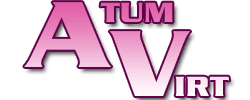We’re currently in the process of deploying 485 n500 zero client units to access our XenDesktop environment. These devices will be primarily used for custodial staff, general student labs and library deployments. The nComputing n500 units offer tremendous value-per-dollar as compared to our previous server-side flash rendering unit, the Wyse C90LEW (Windows Embedded Standard).
n500
The n500 unit packs an impressive amount of features on their proprietary system-on-a-chip (SoC) design. The n500 is an embedded Linux distribution with an ARM processor and the Citrix receiver. The latest firmware for the n500 (1.4.1.1 as of this writing) adds a number of features, showing that nComputing continues to deliver value for the units after launching the product to market. The units aren’t the fastest to boot (login screen takes approximately 55 seconds from power on to become usable), but given their power utilization nComputing’s position has thus far been to recommend we leave the devices powered on. While at Synergy, an nComputing engineer explained to me that their experiments with the devices in an off or sleep state waiting for wake-on-LAN required more power than leaving the device on in a standard mode.
The units themselves feature 2 front USB ports, a front analog audio and front analog microphone port, two rear USB ports, LAN and DVI output. Dual monitor is available, and if you have a DVI-VGA splitter you can use “clone” mode without any hassle. I haven’t tried two monitor mode yet but nComputing claims this requires their proprietary adapter for true dual display. Additional details can be found on the datasheet.
vSpace Management Center
vSpace Management Center (VMC) is nComputing’s latest management platform for their devices with support for the n-series devices. The setup is fairly straight forward and deploys their management software and a Tomcat instance to a server of your choosing. After that, you must point your devices to it using a supported method. For ease of administration, I recommend configuring DHCP options.
The firmware bundle requires downloading from nComputing, something that,in my opinion, should be added to their product interface(“retrieve latest firmware bundle” button). Once downloaded, extract the firmware and upload it via the interface to make it available. At that point, you can deploy the firmware fairly easily to any device which has checked in. One of our initial hangups with vSpace Management Center was the fact that the “initial url” needs to be populated with the FQDN/Port of the server (for example, http://vspace.contoso.local:8080/) so that firmware updates will properly be retrieved. This was a bit confusing for me because the release notes said that field didn’t actually function at the moment, but it is in fact a required field.
The firmware updates process one at a time, which can be time consuming with hundreds of devices. nComputing was very forthcoming with support in offering an “unofficial” update utility which can instruct the clients to update their firmware remotely. The utility itself is straightforward – simply scan a subnet and it will identify nseries devices, specify which devices and action you wish to take (such as update firmware), and away you go. The updates can process concurrently. I had success updating up to 10 at a time. More may be possible, but were not recommended.
vSpace Management Center also offers the ability to create profiles from devices which can then be deployed to a device or device group for easy configuration. It’s worth noting that configuration changes take place nearly “instantly” when deploying to a device as they check in every few seconds to the server.
Moving Forward
Thus far, despite the rough edges here and there, nComputing’s n-series has offered a very complete product, especially given the price point. The devices perform perfectly for our XenDesktop environment (don’t worry- they support XenApp as well if you’ve still got that – it’s a standard Citrix Receiver) and the core functionality is there. The best part is the support and sales team is very responsive and they are clearly receptive to your needs and requirements.

